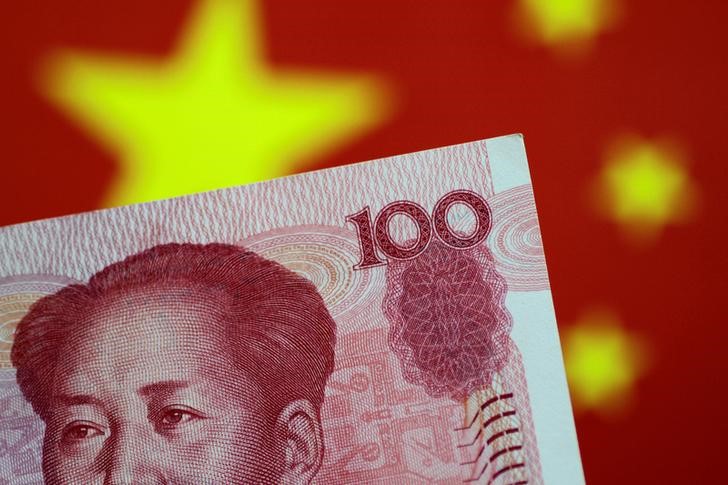 © Reuters. Illustration photo of a China yuan note
© Reuters. Illustration photo of a China yuan noteBEIJING (Reuters) – China is likely to set its 2018 money growth target at an all-time low of around 9 percent to curb debt risks and contain asset bubbles, the official China Daily reported on Monday, citing economists involved in high-level policy discussions.
Financial risks have become the biggest threat to the country’s economic stability in the medium and long term, the China Daily said.
In the past year, deleveraging efforts in the financial system have pushed broad M2 money supply growth to its lowest since records began in 1996.
In November, M2 expanded 9.1 percent from a year earlier, below the government’s full-year target of around 12 percent. The central bank has said slowing M2 growth could be a “new normal” as the government cracks down on riskier banking activities.
In the past decade, the government has set its annual M2 targets between 12 percent and 17 percent.
But authorities walk a fine line as they try to curb risks without pushing borrowing costs too high, which could slow economic growth and roil financial markets.
Even as M2 growth slowed, bank lending hit a fresh record in November.
Analysts said the jump in new loans was due to a crackdown on off-balance sheet lending, forcing banks to issue more formal loans.
Total social financing (TSF), a broad measure of credit and liquidity in the economy, rose to 1.6 trillion yuan ($244 billion) in November from 1.04 trillion yuan a month earlier.
Fusion Media or anyone involved with Fusion Media will not accept any liability for loss or damage as a result of reliance on the information including data, quotes, charts and buy/sell signals contained within this website. Please be fully informed regarding the risks and costs associated with trading the financial markets, it is one of the riskiest investment forms possible.
Source: Investing.com




























